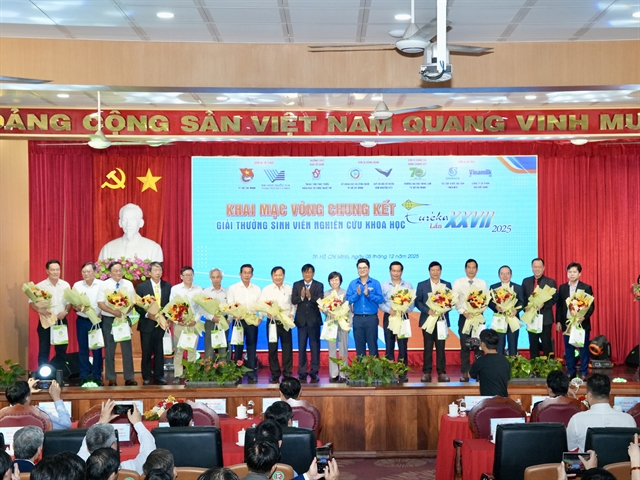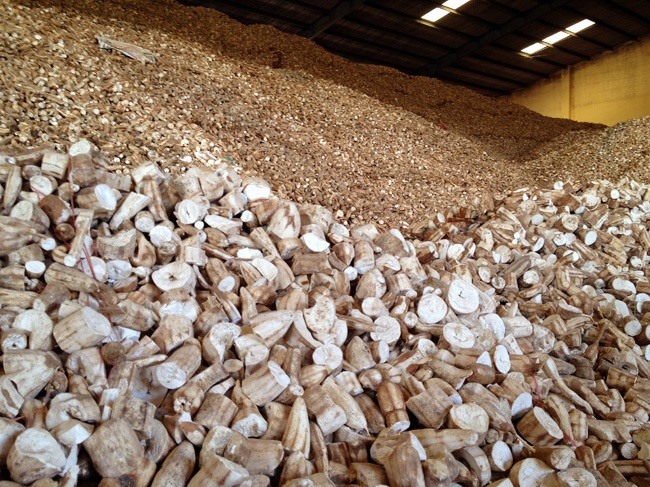 Economy
Economy

Việt Nam will continue to face difficulties in exporting cassava this year, especially to China, the largest export market of local cassava, according to the Việt Nam Cassava Association.
 |
| China is importing less cassava from Việt Nam, causing difficulties for local producers. - Photo vietnambiz.vn |
HÀ NỘI – Việt Nam will continue to face difficulties in exporting cassava this year, especially to China, the largest export market of local cassava, according to the Việt Nam Cassava Association.
China has strict regulations on packaging labels and information on Vietnamese cassava starch imported via border gates to Guangxi Province, the association said.
China has dumped corn into stock used for animal feed and the industrial sector, making corn prices in China more competitive with imported cassava.
In addition, demand for imported cassava from Việt Nam via border gates has dropped because of a rise in contracts to import the product from Thailand.
The exchange rate between the yuan and Vietnamese đồng decreased because the yuan continued to depreciate against the US dollar, which was a disadvantage for export transactions through the border gates.
China is the largest consumer of Vietnamese cassava, accounting for 90 per cent of exports, so it has affected local businesses and farmers, according to the association.
According to the Ministry of Industry and Trade (MoIT)’s Export and Import Department, in the first half of January, the raw material price of cassava in Tây Ninh and Kon Tum provinces decreased slightly due to weak demand and over supply of cassava.
The purchasing price of cassava at processing factories dropped by VNĐ100,000 per tonne to VNĐ2.7-3 million (US$116-128) against the end of December 2018 in Tây Ninh Province and to VNĐ2.6-2.8 million in Kon Tum Province.
Nguyễn Thắng Mạnh from the Việt Nam Cassava Association told Việt Nam News that now, cassava inventories at processing factories are high while they are out of capital to continue production.
“If this situation lasts for a month, many factories will go bankrupt, having great consequences on businesses and farmers as well as the economy,” Mạnh said.
Most factories have also not invested in developing material areas and mainly bought the material from farmers, leading to fierce competition in purchasing raw materials. This has reduced competition of processed products for export, according to the association.
Development of processing factories is not synchronised with the development of material regions, according to the association.
Those difficulties pushed the industry out of the list of goods achieving at least US$1 billion in export value last year.
According to the Ministry of Agriculture and Rural Development (MARD), in 2018, the industry exported 2.4 million tonnes of cassava, earning $958.7 million. Those figures were a reduction of 38 per cent in volume and 7.1 per cent in value year on year.
Therefore, the Ministry of Industry and Trade and MARD are working with Chinese partners to facilitate Vietnamese cassava starch production and trading enterprises in export to the Chinese market.
According to the association, 50 per cent of 120 existing factories, not including household-scale factories, meet China’s food hygiene and safety standards. This is important because in the future, this market would promote traceability and food safety requirements.
Therefore, the association said the industry needs to encourage household-scale factories to implement food hygiene and safety standards to meet requirements at home and abroad.
Nguyễn Quốc Toản, director of MARD’s Department of Farm Product Processing and Market Development, said Chinese consumers prefer Vietnamese agricultural products but if the local products are not improved soon they would face difficulties entering this market. In promoting further international economic integration, the products must ensure they meet quality standards to be exported to foreign markets.
Toản said that farmers and businesses must change their production and management methods as well as strengthen processing of added-value products.
At the same time, the State and businesses should boost trade promotion activities to expand export markets, avoiding dependence on China market. The traders should shift from trading small volumes at border gates to doing business under contracts with large export volumes.
The association said it needs cooperation from the Department of Farm Product Processing and Market Development and the MoIT’s Trade Promotion Agency to promote exports to other markets.
In addition, MARD and localities should coordinate with the association to manage plans on synchronous development of processing factories and raw material regions, avoiding overlaps.
The MARD has also proposed the Government reduce value-added tax from 10 per cent to 5 per cent for cassava because cassava production is mainly located in remote areas. — VNS




.jpeg)